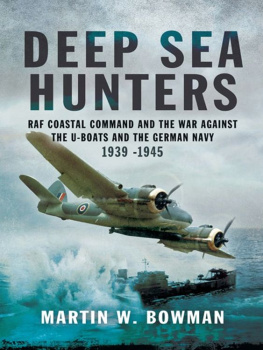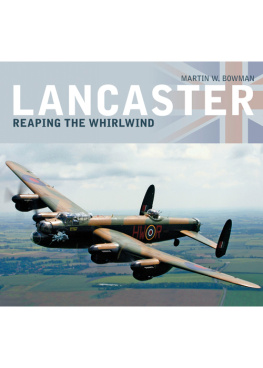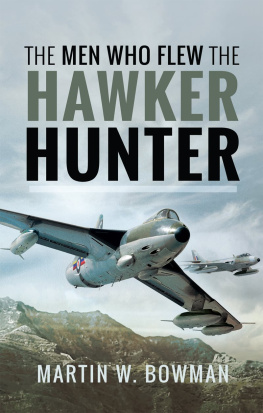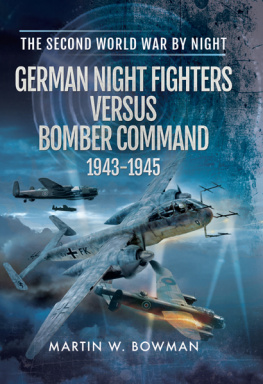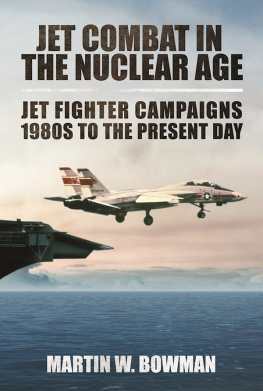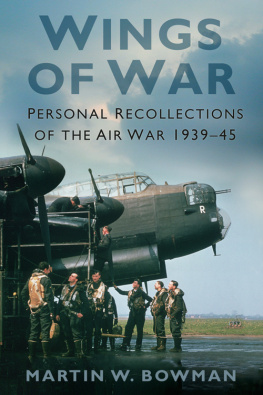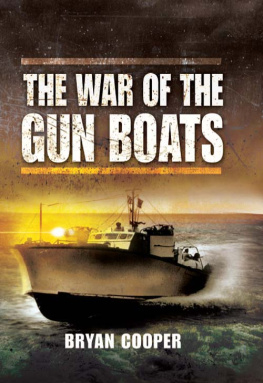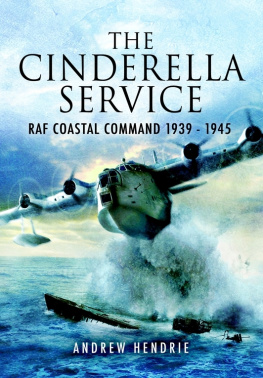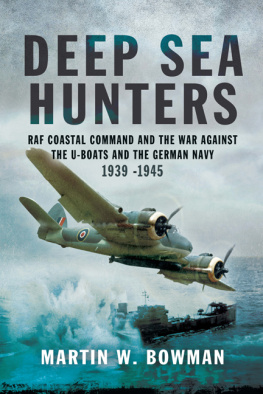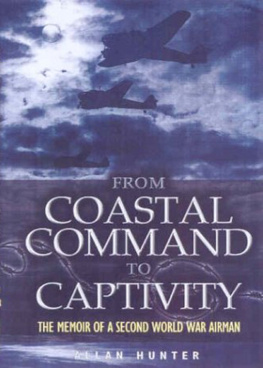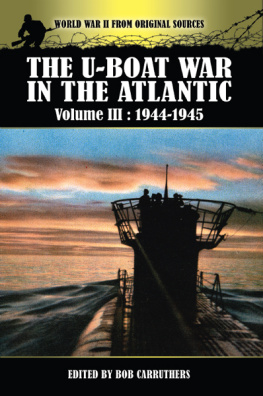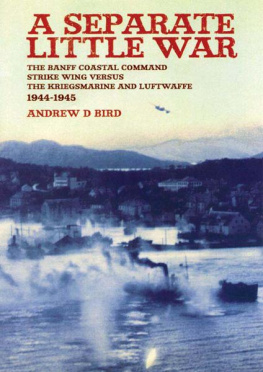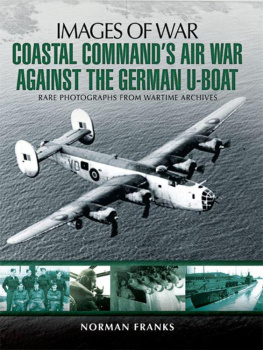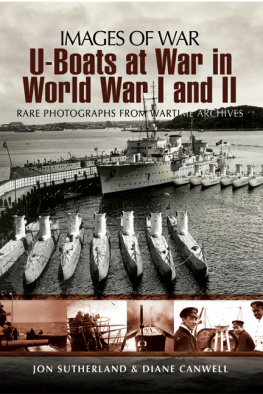
First Published in Great Britain in 2014 by
Pen & Sword Aviation
an imprint of
Pen & Sword Books Ltd
47 Church Street, Barnsley, South Yorkshire S70 2AS
Copyright Martin W Bowman, 2014
ISBN 9781783831968
eISBN 9781473841444
The right of Martin W Bowman to be identified as author of this work has been asserted by him in accordance with the Copyright, Designs and Patents Act 1988.
A CIP catalogue record for this book is
available from the British Library.
All rights reserved. No part of this book may be reproduced or transmitted in any form or by any means, electronic or mechanical including photocopying, recording or by any information storage and retrieval system, without permission from the Publisher in writing.
Typeset in 10/12pt Palatino
by GMS Enterprises
Printed and bound in England by
CPI Group (UK) Ltd, Croydon, CR0 4YY
Pen & Sword Books Ltd incorporates the Imprints of Pen & Sword
Aviation, Pen & Sword Family History, Pen & Sword Maritime, Pen & Sword
Military, Pen & Sword Discovery, Wharncliffe Local History, Wharncliffe
True Crime, Wharncliffe Transport, Pen & Sword Select, Pen & Sword
Military Classics, Leo Cooper, The Praetorian Press, Remember When,
Seaforth Publishing and Frontline Publishing.
For a complete list of Pen & Sword titles please contact
PEN & SWORD BOOKS LIMITED
47 Church Street, Barnsley, South Yorkshire, S70 2AS, England
E-mail: enquiries@pen-and-sword.co.uk
Website: www.pen-and-sword.co.uk
Contents
Acknowledgements
I am indebted to all the contributors for their words and photographs. Thanks also go to my fellow author, friend and colleague, Graham Simons, for getting the book to press ready standard and for his detailed work on the photographs; to Pen & Sword and in particular, Laura Hirst; and to Jon Wilkinson, for his unique jacket design once again.
Introduction
Coastal Command is an air force in miniature. Its Sunderlands and Catalinas range the ocean to protect our ships; so likewise do its Beauforts and Blenheims, its Whitleys and Wellingtons, its Hudsons and Liberators, but they are also a bombing force capable of instant use against a wide choice of targets; its Beaufighters and Blenheim fighters join combat with the Luftwaffe at ranges beyond those within the compass of Fighter Command. It is an amphibious force in the sense that, though its element is the air, it makes us of both land and sea to provide it with bases from which to set out against the enemy. Its aircraft fly over the restless waters of the Atlantic, the Channel and the North Sea, over the pack-ice about the shores of Greenland, over the desert scrub and palms of West Africa, over the stern mountains of Norway and Iceland, ever the wide fields of France, over the iron and concrete buildings of Reykjavik, the wooden houses of Trondheim, the brick-built mansions of Rotterdam, the lighted windows of Nantes .
Their Spirit is Serene; Coastal Command; The Air Ministry Account of the Part Played by Coastal Command in the Battle of the Seas 1939-1942 .
At the outbreak of war Coastal Command Order of Battle (ORBAT) was eleven GR (General Reconnaissance) squadrons, ten of which were equipped with Avro Ansons; and of the six flying boat units only two had Sunderlands - 204 Squadron at Mount Batten, near Plymouth in Devonshire and 210 Squadron at Pembroke Dock - always known as PD. On 3 September 1939 Coastal Command was equipped with six main types comprising 487 aircraft, the most numerous being the Avro Anson with 301 aircraft. The Anson or Faithful Annie to give it its Service nickname was a military development of the Avro 652 six-passenger commercial aircraft, two of which were ordered by Imperial Airways in April 1934. In May 1934 the Avro Company was invited by the Air Ministry to consider the design of a twin-engined landplane for coastal reconnaissance duties. The design which later became known as the Anson was accepted by the Air Ministry in September 1934 and the prototype first flew on 24 March 1935. In July 1935 Avros received an initial contract for 174 Ansons and on 6 March 1936, Ansons entered service on 48 Squadron at Manston, Kent. On Tuesday 5 September 1939 when two Ansons on 206 Squadron were deployed to fight German U-boats, mistakenly attacked two surfaced British submarines with two 99lb depth charges. The HMS Snapper received a direct hit on its conning tower but that did no more than break four electric bulbs inside the boat. On 3 December an Anson on 206 Squadron released its bombs onto the conning tower of another surfaced submarine - U-boat this time - and Pilot Officer R. H. Harper received the DFC for his determined attack. Though classified as obsolescent for front-line service by 1940, Ansons continued to fill the gap for many Coastal units until late 1941.
Not surprisingly, the German Unterseeboote was a highly respected adversary. A U-boat for example, could be armed with an 88mm gun and two 20mm guns forward, or four 20mm cannon, or a 37mm gun. Either way, when they cornered one, crews knew they were in for a fight, especially when Karl Dnitz, the U-boat Commander-in-Chief, ordered that U-boats, when attacked, were to remain on the surface and slug it out with their low level attackers.
After the Anson, at the outbreak of war the next most numerous aircraft were 53 Lockheed Hudsons and thirty obsolete Vickers Vildebeest biplane torpedo-bombers which had been in service since 1933. The Hudson was the first American-built aircraft to see operational service with the RAF in the Second World War. The original Lockheed 14, from which the Hudson derived, made its first flight on 29 July 1937. The first Hudson for the RAF first flew on 10 December 1938. The turret was fitted on the Hudsons after arrival in England and was of Boulton Paul type, carrying twin guns. The Hudson first entered service on 224 Squadron at Gosport in the summer of 1939, replacing Avro Ansons.
A flight sergeant in charge of a maintenance party on 224 Squadron who was a pilot until an accident put him on ground duties, said that being the first squadron in the RAF to be equipped with American aircraft, anyone who wanted to know the difference between the English and American language should have come to his workshops then. Many of the engineering terms are quite different. Most people know that petrol is gasoline and engines are motors, but did you know that the American equivalent of chassis is structure, oil or petrol feed-pipes are collectively called plumbing, a hand fuel pump is a wobble pump and a tailplane is a horizontal stabiliser? There are many more curious terms we had to learn when we first got Hudsons. We could have done with a dictionary. We had the very willing assistance of Lockheed and Wright-Cyclone engine experts to smooth the difficulties, but even they unwittingly misled us on occasions. For instance, they would talk about seeing a ship out at sea and while we would look on the water they were watching an aircraft in the sky.
In a way, we are rather like surgeons who take a pride in performing restorative treatment. We replace broken sections and graft on new metal skin. If you could see the damaged condition in which an aircraft sometimes returns, you would think it could never be repaired. But we can do wonders with a few days in the workshops - or even a few hours - and it comes out again as good as new. When an aeroplane returns with battle-scars we make a thorough examination to check up the full extent of the damage. Its amazing how some bullet-holes hide themselves away. On one occasion we thought we had finished the repairs, but a final check-over revealed a bullet-hole through a bolt holding a wing in place. The bullet had neatly removed the core of the bolt without damaging anything else, so it was difficult to see that anything was wrong. Then, sometimes, a scrap of shrapnel will play havoc with the complicated wiring system of the instrument panel. When something goes wrong with that box of tricks, you need the patience of Job to put it right again.
Next page
